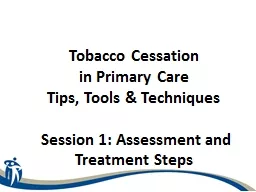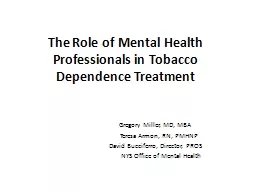PPT-Tobacco dependence: A race by smoker type interaction
Author : debby-jeon | Published Date : 2017-04-09
Jessica Cheng Dept of Epidemiology Saul Shiffman Dept of Psychology Background Some data suggest that among daily smokers DS African Americans develop dependence
Presentation Embed Code
Download Presentation
Download Presentation The PPT/PDF document "Tobacco dependence: A race by smoker typ..." is the property of its rightful owner. Permission is granted to download and print the materials on this website for personal, non-commercial use only, and to display it on your personal computer provided you do not modify the materials and that you retain all copyright notices contained in the materials. By downloading content from our website, you accept the terms of this agreement.
Tobacco dependence: A race by smoker type interaction: Transcript
Download Rules Of Document
"Tobacco dependence: A race by smoker type interaction"The content belongs to its owner. You may download and print it for personal use, without modification, and keep all copyright notices. By downloading, you agree to these terms.
Related Documents














